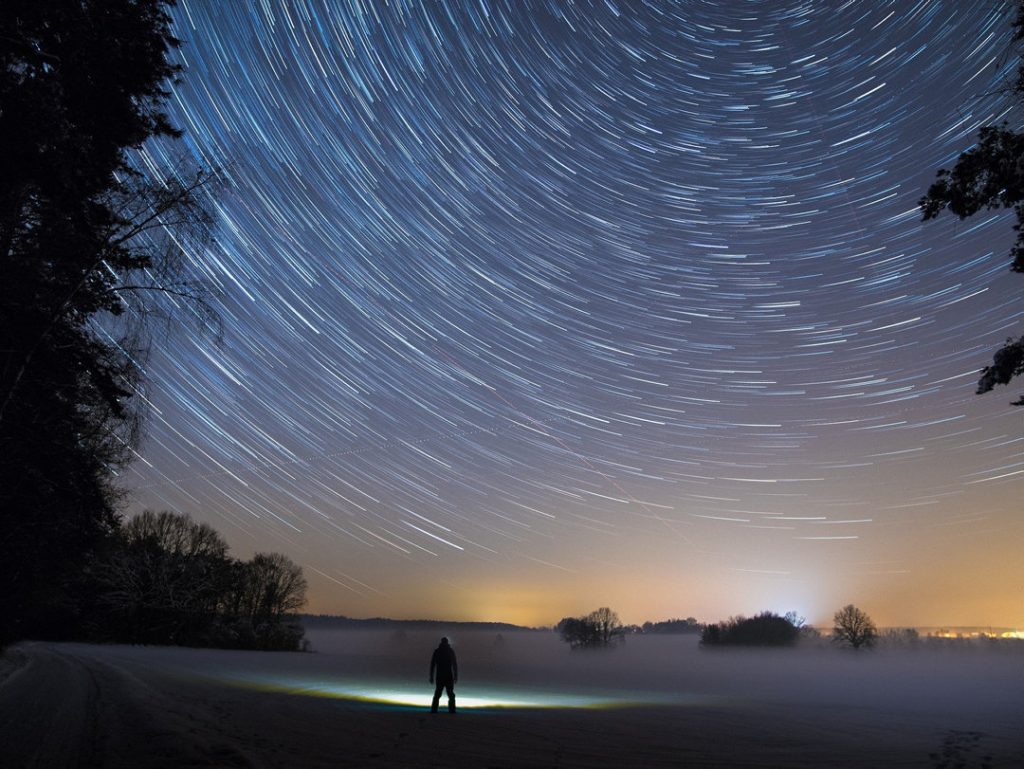BY MIKE LYNCH
Since last autumn one of the marquee pleasures of the night sky in Northeast Pennsylvania has been gracing stargazers. It’s the Pleiades star cluster, easily seen with just your God-given eyes, even in light-polluted heavens. As winter wanes, the Pleiades are waiting for you in the high southwestern, early evening sky in the constellation Taurus the Bull, just to the right of Orion the Hunter. At first glance, it looks like a shrunk-down version of the Big Dipper. Most people can see six stars but if you have really good eyes and a super clear sky, you can see seven stars or even more.
The Pleiades are also known as the Seven Little Sisters. According to one of the Greek and Roman mythology tales, the sisters were the god Atlas’ daughters, the king of the gods until Zeus and his army threw him off his throne. The story goes that once Zeus gained control of Mount Olympus, he dealt Atlas a brutal sentence. He was to hold the entire world on his shoulders eternally. Zeus pitied Atlas’ daughters, though, and let them go free. Eventually, they were transformed into a star cluster, still weeping about the fate of their father.
This week, the celestial sisters have company. The planet Mars is at their doorstep, just to the left of the Pleiades. You can’t miss it as Mars is the brightest celestial object in that immediate area, resembling a moderately orange-red star. Unfortunately, even with larger backyard telescopes, Mars will just appear more or less as an orange dot. You certainly won’t be able to spot the new Perseverance rover that landed there last month! Last October, Mars was much brighter because it was much closer to Earth. Since then, our world and Mars have substantially distanced themselves from each other as they both travel around the sun in individual orbits. All the planets in our solar system appear to wander among the backdrop of the much more distant stars as they orbit the sun. Mars just happens to be closely passing by the Pleiades this week, celestially hugging the Seven Little Sisters!
With binoculars, early this week, it’s possible to see the Pleiades and Mars in the same field of view, which is rare. Your binoculars will also reveal many more stars in the Pleiades than just the six or seven stars you see with the naked eye. There are dozens and dozens of fainter stars. Astronomically, the Pleiades is a cluster of young stars about 100 million years old, considered young for stars. They were all gravitationally born out of the same colossal cloud of hydrogen gas.
Most of the Pleiades’ stars are much larger than our sun but sure don’t seem that way because they’re so far away, more than 400 light-years distant. A light-year is defined as the distance light travels in a year, which works out to nearly 6 trillion miles. The Pleiades are so far away that we’re not seeing them as they are now, but as they appeared more than 400 years ago when Galileo was alive! Honestly, though, the Pleiades haven’t changed hardly at all since then.
Not all that far away from the Pleiades in the night sky is a pair of star clusters that I guarantee you’ll be impressed with when you check them out, even with just binoculars. It’s the Perseus Double Cluster, located just above the head of the faint constellation Perseus the Hero. There’s a really easy way to find twin clusters using the much brighter constellation Cassiopeia the Queen. Look for bright stars that form a sideways “W” in the northwestern sky. You can’t miss it! Scan your binoculars or telescope just a tiny bit to the upper right of Cassiopeia and you should find the double cluster without hardly any trouble.
Through even a small telescope, you’ll be blown away when you get the Perseus Double Cluster in your field of view! It’s gorgeous!. I know you’ll fall in love with it. Like the Pleiades, both clusters are tremendously large families of young stars born together, many of which are much larger than the sun. The Perseus Double Cluster, though, is much farther away than the Pleiades, more than 7,000 light-years away! Both members of the Double Cluster are also much larger than the Pleiades. If you could magically pull in the Double Cluster as close to the Earth as the Pleiades, they would take up more than a fourth of the night sky!
There are many, many more star clusters through the heavens, but the Pleiades and Perseus Double Cluster are among the best!
Lynch, an amateur astronomer and professional broadcast meteorologist, can be reached at mikelynch@comcast.net.

Caitlin Heaney West is the content editor for Access NEPA and oversees the Early Access blog in addition to working as a copy editor and staff writer for The Times-Tribune. An award-winning journalist, she is a summa cum laude graduate of Shippensburg University and also earned a master’s degree from Marywood University. Caitlin joined the Times-Shamrock family in 2009 and lives in Scranton. Contact: cwest@timesshamrock.com; 570-348-9100 x5107; or @cheaneywest



